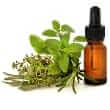Background
- Khat is believed to have originated in Ethiopia. It is a flowering evergreen plant native to tropical East Africa. Khat has been grown for use as a stimulant for centuries and predates the use of coffee.
- Khat is an agent that has been used in social settings to induce feelings of euphoria and pleasure. Medicinally, it has been used to treat depression and to enhance work capacity. Khat has also been used as an aphrodisiac, to treat premature ejaculation, and to enhance sexual desire.
- Currently, there are no well-designed clinical trials evaluating khat for any indication. Two poorly documented trials evaluated khat in cognitive function. One study revealed no difference in cognitive function in the elderly with khat use. In the other study, cognitive functioning was negatively affected by khat use.
- Fresh khat leaves contain cathinone - a Schedule I drug under the Controlled Substances Act; however, the leaves typically begin to deteriorate after 48 hours, causing the chemical composition of the plant to break down. Once this occurs, the leaves contain cathine, a Schedule IV drug. Khat is currently illegal in the United States.
References
- Adeoya-Osiguwa SA, Fraser LR. Cathine and norephedrine, both phenylpropanolamines, accelerate capacitation and then inhibit spontaneous acrosome loss. Hum.Reprod. 2005;20(1):198-207.
View Abstract - Al Motarreb AL Broadley KJ. Coronary and aortic vasoconstriction by cathinone, the active constituent of khat. Auton.Autacoid.Pharmacol 2003;23(5-6):319-326.
View Abstract - Al Motarreb A, Briancon S, Al Jaber N, et al. Khat chewing is a risk factor for acute myocardial infarction: a case-control study. Br J Clin Pharmacol 2005;59(5):574-581.
View Abstract - Al Zubairi A, Al Habori M, Al Geiry A. Effect of Catha edulis (khat) chewing on plasma lipid peroxidation. J.Ethnopharmacol. 2003;87(1):3-9.
View Abstract - Belhadj-Tahar H, Sadeg N. Methcathinone: a new postindustrial drug. Forensic Sci Int 10-4-2005;153(1):99-101.
View Abstract - Dimba EA, Gjertsen BT, Bredholt T, et al. Khat (Catha edulis)-induced apoptosis is inhibited by antagonists of caspase-1 and -8 in human leukaemia cells. Br.J.Cancer 11-1-2004;91(9):1726-1734.
View Abstract - Hassan NA, Gunaid AA, El Khally FM, et al. Khat chewing and arterial blood pressure. A randomized controlled clinical trial of alpha-1 and selective beta-1 adrenoceptor blockade. Saudi.Med J 2005;26(4):537-541.
View Abstract - Hassan NA, Gunaid AA, El Khally FM, et al. The effect of chewing Khat leaves on human mood. Saudi.Med.J. 2002;23(7):850-853.
View Abstract - Kassim S, Croucher R. Khat chewing amongst UK resident male Yemeni adults: an exploratory study. Int Dent.J 2006;56(2):97-101.
View Abstract - Kuczkowski KM. Herbal ecstasy: cardiovascular complications of khat chewing in pregnancy. Acta Anaesthesiol.Belg. 2005;56(1):19-21.
View Abstract - Murugan N, Burkhill G, Williams SG, et al. The effect of khat chewing on gallbladder motility in a group of volunteers. J.Ethnopharmacol. 2003;86(2-3):225-227.
View Abstract - Nasher AA, Qirbi AA, Ghafoor MA, et al. Khat chewing and bladder neck dysfunction. A randomized controlled trial of alpha 1-adrenergic blockade. Br.J.Urol. 1995;75(5):597-598.
View Abstract - Patel NB. Mechanism of action of cathinone: the active ingredient of khat (Catha edulis). East Afr.Med.J. 2000;77(6):329-332.
View Abstract - Toennes SW, Kauert GF. Driving under the influence of khat--alkaloid concentrations and observations in forensic cases. Forensic Sci.Int. 2-10-2004;140(1):85-90.
View Abstract - Toennes SW, Harder S, Schramm M, et al. Pharmacokinetics of cathinone, cathine and norephedrine after the chewing of khat leaves. Br.J.Clin.Pharmacol. 2003;56(1):125-130.
View Abstract







